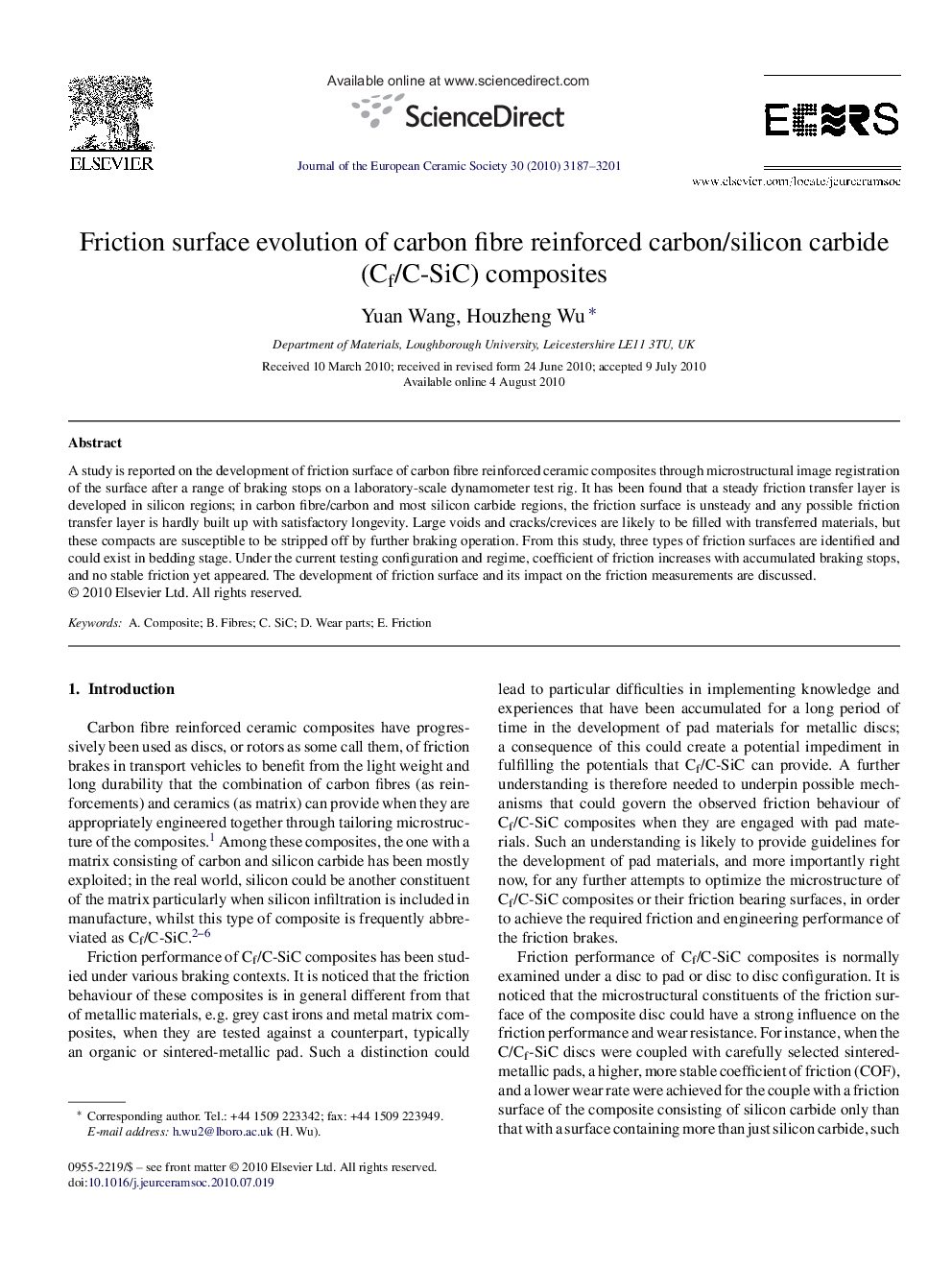| Article ID | Journal | Published Year | Pages | File Type |
|---|---|---|---|---|
| 1476509 | Journal of the European Ceramic Society | 2010 | 15 Pages |
A study is reported on the development of friction surface of carbon fibre reinforced ceramic composites through microstructural image registration of the surface after a range of braking stops on a laboratory-scale dynamometer test rig. It has been found that a steady friction transfer layer is developed in silicon regions; in carbon fibre/carbon and most silicon carbide regions, the friction surface is unsteady and any possible friction transfer layer is hardly built up with satisfactory longevity. Large voids and cracks/crevices are likely to be filled with transferred materials, but these compacts are susceptible to be stripped off by further braking operation. From this study, three types of friction surfaces are identified and could exist in bedding stage. Under the current testing configuration and regime, coefficient of friction increases with accumulated braking stops, and no stable friction yet appeared. The development of friction surface and its impact on the friction measurements are discussed.
